
There is a particular stillness to Mohsin Naveed Ranjha’s world — a stillness that does not silence, but listens. In his 2025 festive unstitched collection, Zarlish, this year told as the story of Makhfi: that quiet becomes language. It speaks of women who live between light and shadow; of the power that hides as much as it reveals.
At the center of this reflection stands Princess Zeb-un-Nisa, daughter of Emperor Aurangzeb — a poetess, philosopher, and the spirit Ranjha reimagines through Makhfi. Writing under the pen name Makhfi — “the hidden one” — Zeb-un-Nisa embodied a paradox: royal and restrained, brilliant yet bound by the decorum of her lineage. Her verses, secret yet enduring, whispered of longing, intellect, and quiet defiance.
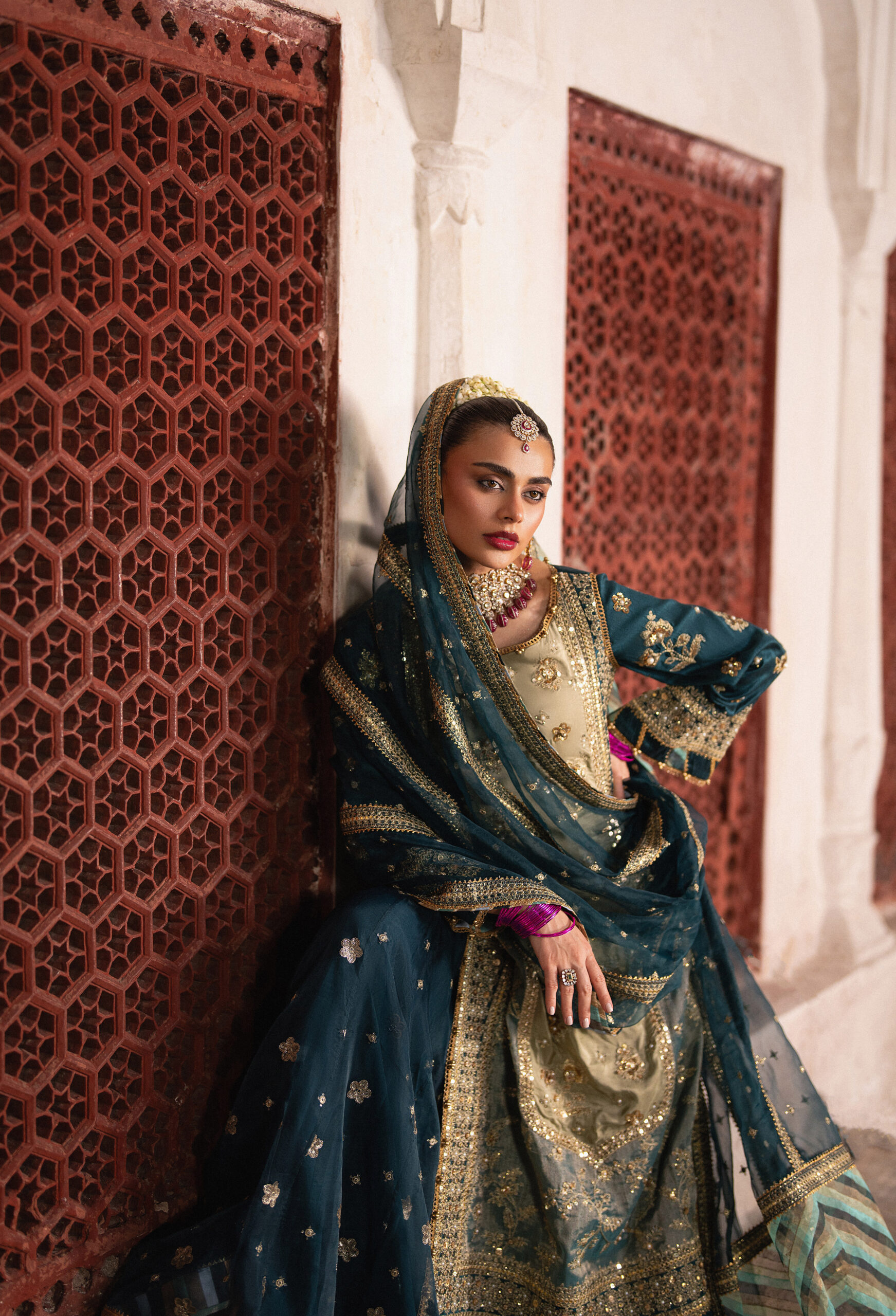
It is that paradox that Ranjha transforms into design — turning concealment into craft, silence into structure.
Few designers in South Asian fashion understand narrative the way Mohsin Naveed Ranjha does. His work is never simply about clothes; it is about context — about resurrecting histories that have been softened or forgotten. In Makhfi, he reaches for a story not of opulence, but of introspection.
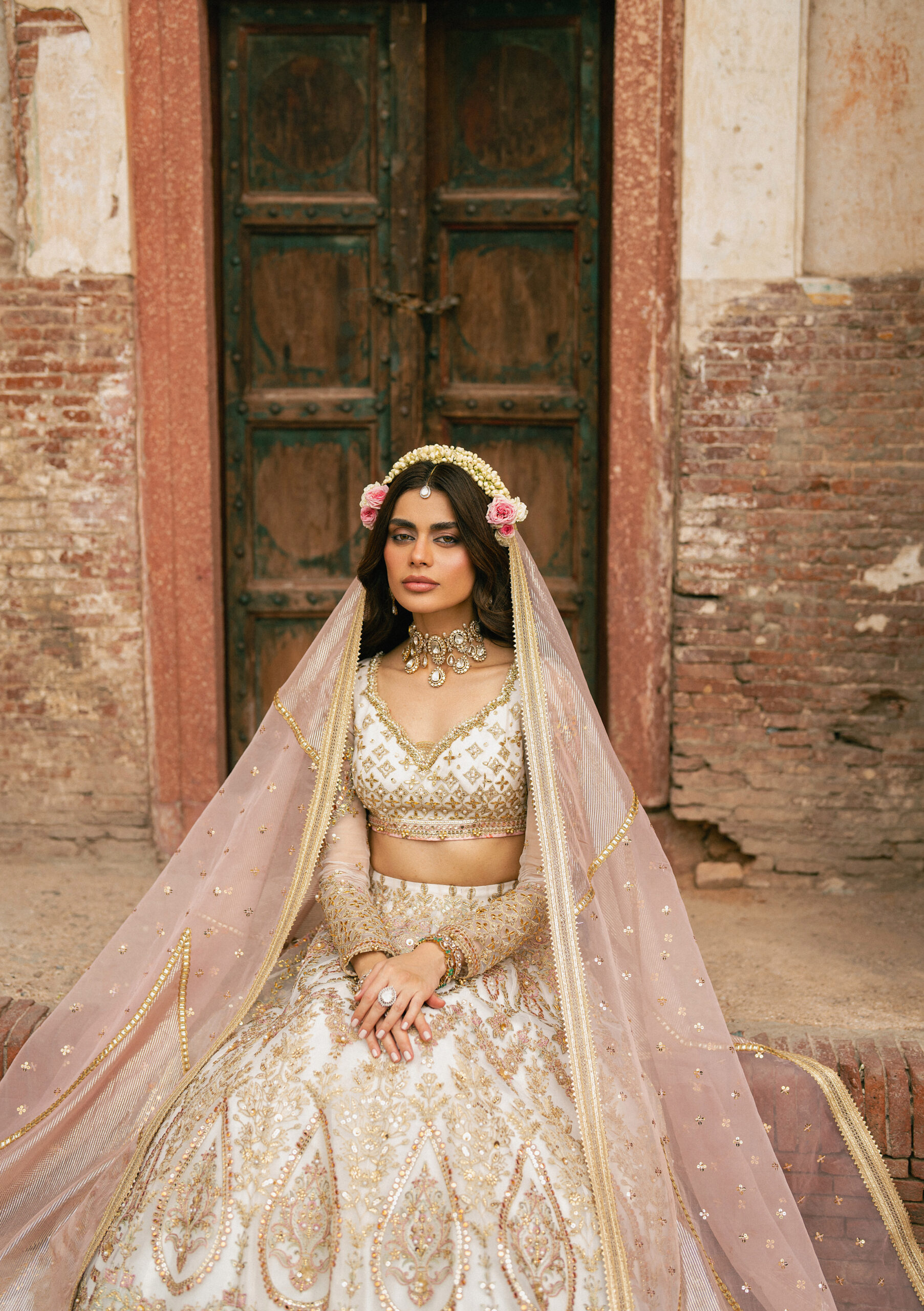
The collection’s muse, Sadaf Kanwal, does not play Makhfi; she becomes her. Shot against the enduring marble geometry of Shalimar Gardens, Kanwal embodies the balance between exposure and retreat. In her stillness lies assertion; in her restraint, expression.
Ranjha builds his garments with the same philosophy. Layer upon layer of resham, tilla, and zari embroidery trace lines that echo the jaalis and arches of Shalimar. Each piece conceals detail until one looks closer — a metaphor for the women it honors: complex, deliberate, and multidimensional.

The color story begins in soft beiges and moonlit pinks — tones of self-possession — and deepens gradually into the glowing crimson of Bia, the recurring red ensemble dedicated to Ranjha’s wife. It is the collection’s heartbeat, a symbol of personal devotion woven into a broader reflection on feminine strength.
Makhfi is not a campaign about rebellion; it is a campaign about revelation — about how the act of hiding can itself be a form of resistance. In an age that celebrates exposure, Ranjha’s work re-centers mystery as power.
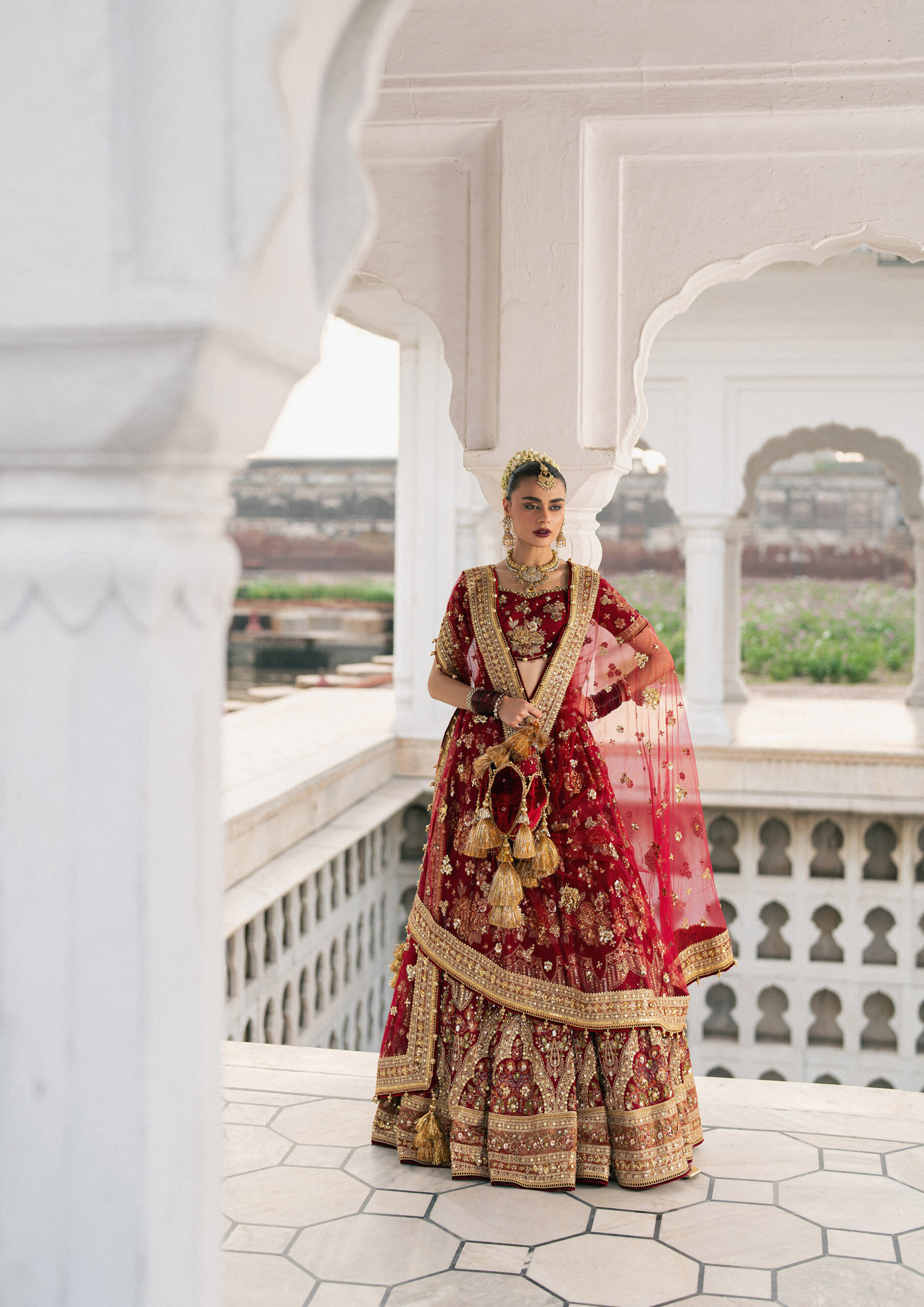
The unstitched format of Zarlish reinforces that philosophy. These are not garments that dictate; they invite. They allow the wearer to compose her own silhouette, to decide what to veil and what to reveal. In doing so, Ranjha gives back autonomy — a quiet, radical form of design freedom that aligns seamlessly with Makhfi’s narrative of self-possession.
Through fabric, he restores dignity to discretion. Through design, he transforms absence into articulation.
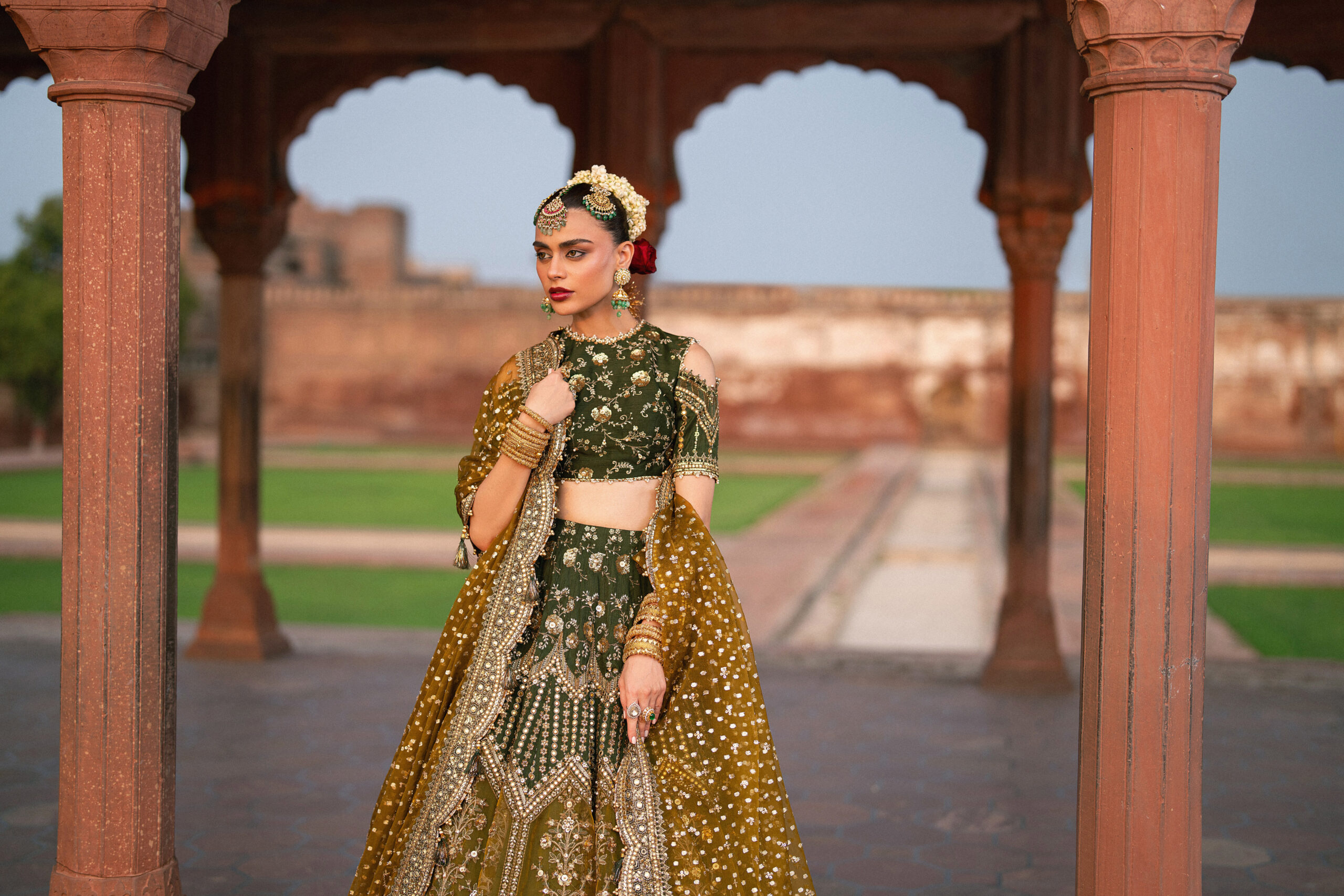
Set within Shalimar Gardens, Makhfi becomes a dialogue between the built and the born — between architecture and anatomy, marble and muscle, stone and soul. The symmetry of the surroundings amplifies the symmetry within: the woman who can be both muse and maker, silence and sound.
Ranjha’s understanding of heritage is never nostalgic. His Lahore is alive — breathing through modern sensibility, moving through the women who wear his work. His craft reveres the karigar as much as the muse; his fabric speaks as much to the future as to the past.
This, ultimately, is the secret of Makhfi: it is not about the hidden woman being found — it is about her being understood.
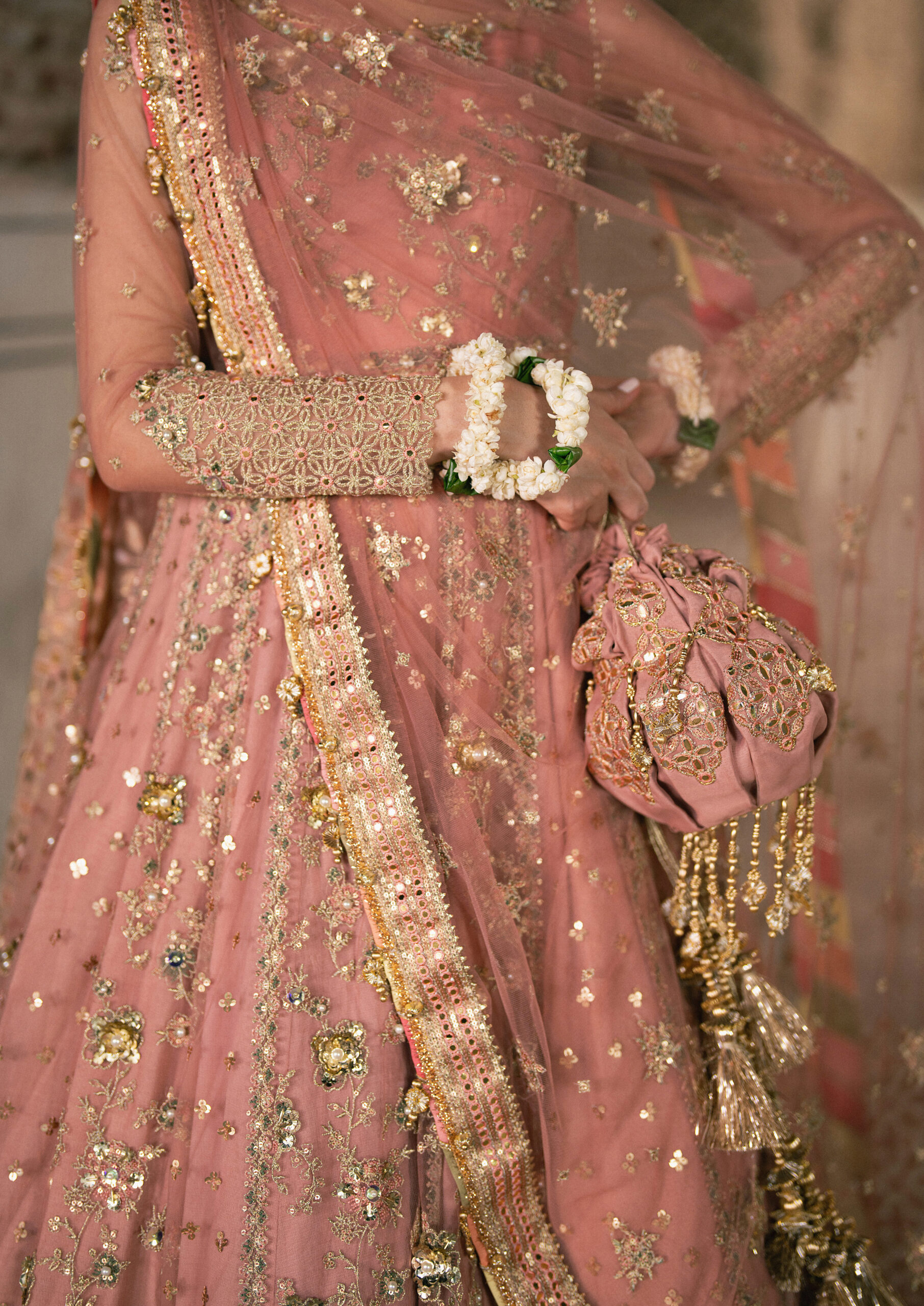
If Zarlish as a collection is a gesture of inclusivity, Makhfi is its soul — a philosophical cornerstone. It redefines visibility as a choice rather than a demand. It reminds us that expression does not always require declaration; sometimes, it requires discipline.
In Ranjha’s lens, the hidden woman is not voiceless — she is vast. Her silence is not emptiness; it is echo. Her concealment is not absence; it is authorship.
As Sadaf Kanwal walks through the corridors of Shalimar, light shifting through filigreed stone, one can almost hear Makhfi’s verses rise between the stitches — verses of patience, presence, and persistence.

Makhfi, for Mohsin Naveed Ranjha, is more than homage; it is articulation. It is his acknowledgment that women, much like heritage, are not to be interpreted — they are to be read with reverence.
And so the designer steps back, allowing the garments to speak. And they do — softly, assuredly, like the poetess who inspired them. For in every fold, every thread, every shadowed glimmer of Zarlish: Makhfi, the hidden one is no longer hidden. She endures. She defines. She reigns.
